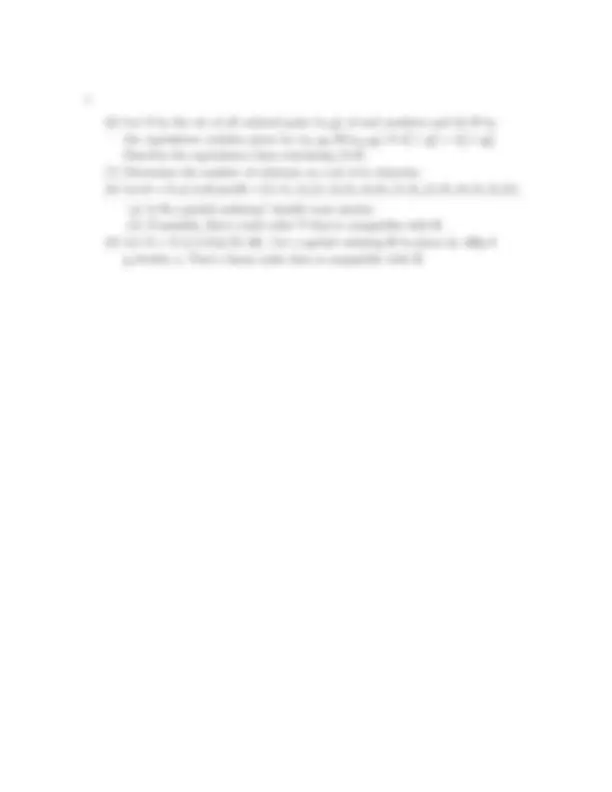



Study with the several resources on Docsity

Earn points by helping other students or get them with a premium plan


Prepare for your exams
Study with the several resources on Docsity

Earn points to download
Earn points by helping other students or get them with a premium plan
Community
Ask the community for help and clear up your study doubts
Discover the best universities in your country according to Docsity users
Free resources
Download our free guides on studying techniques, anxiety management strategies, and thesis advice from Docsity tutors
Material Type: Exam; Class: Introductory Discrete Mathematics; Subject: MATHEMATICAL SCIENCES; University: Northern Illinois University; Term: Spring 2008;
Typology: Exams
1 / 2

This page cannot be seen from the preview
Don't miss anything!


(1) Make a PERT diagram for the following problem and determine the project time and the critical path. Table 1. default task time preceeding tasks A 5 none B 9 A C 10 A, F D 7 B, C E 2 none F 4 E G 11 E H 9 F, G I 6 D, H
(2) A make-up kit contains 3 moustaches, 3 eyebrows, 5 noses and 2 sets of ears. What is the number of possible disguises using at least one item? (3) A draw poker player can discard some but not all of his 5 cards for new ones. How many choices does a player have? (4) Determine the complexity of the following polynomial evaluation algo- rithm: Input: nonnegative integer n and real numbers x, a 0 , a 1 ,... , an; output: P(x) = a 0 + a 1 x + a 2 x^2 + · · · + anxn. Step 1. (initialization) Set S = a 0 and k = 1 ; Step 2. (add the next term) while k ≤ n
(5) Show that p → (q ∨ r) and (p → q) ∨ (p → r) are logically equivalent. 1
2
(6) Let S be the set of all ordered pairs (x, y) of real numbers and let R be the equivalence relation given by (x 1 , y 1 ) R (x 2 , y 2 ) if x^21 + y^21 = x^22 + y^22. Describe the equivalence class containing (3, 4). (7) Determine the number of relations on a set of n elements. (8) Let S = {1, 2, 3, 4} and R = {(1, 1), (2, 2), (3, 3), (4, 4), (1, 3), (2, 4), (4, 3), (2, 3)}. (a) Is R a partial ordering? Justify your answer. (b) If possible, find a total order T that is compatible with R. (9) Let S = {1, 2, 3, 4, 6, 12, 16}. Let a partial ordering R be given by xRy if y divides x. Find a linear order that is compatible with R.